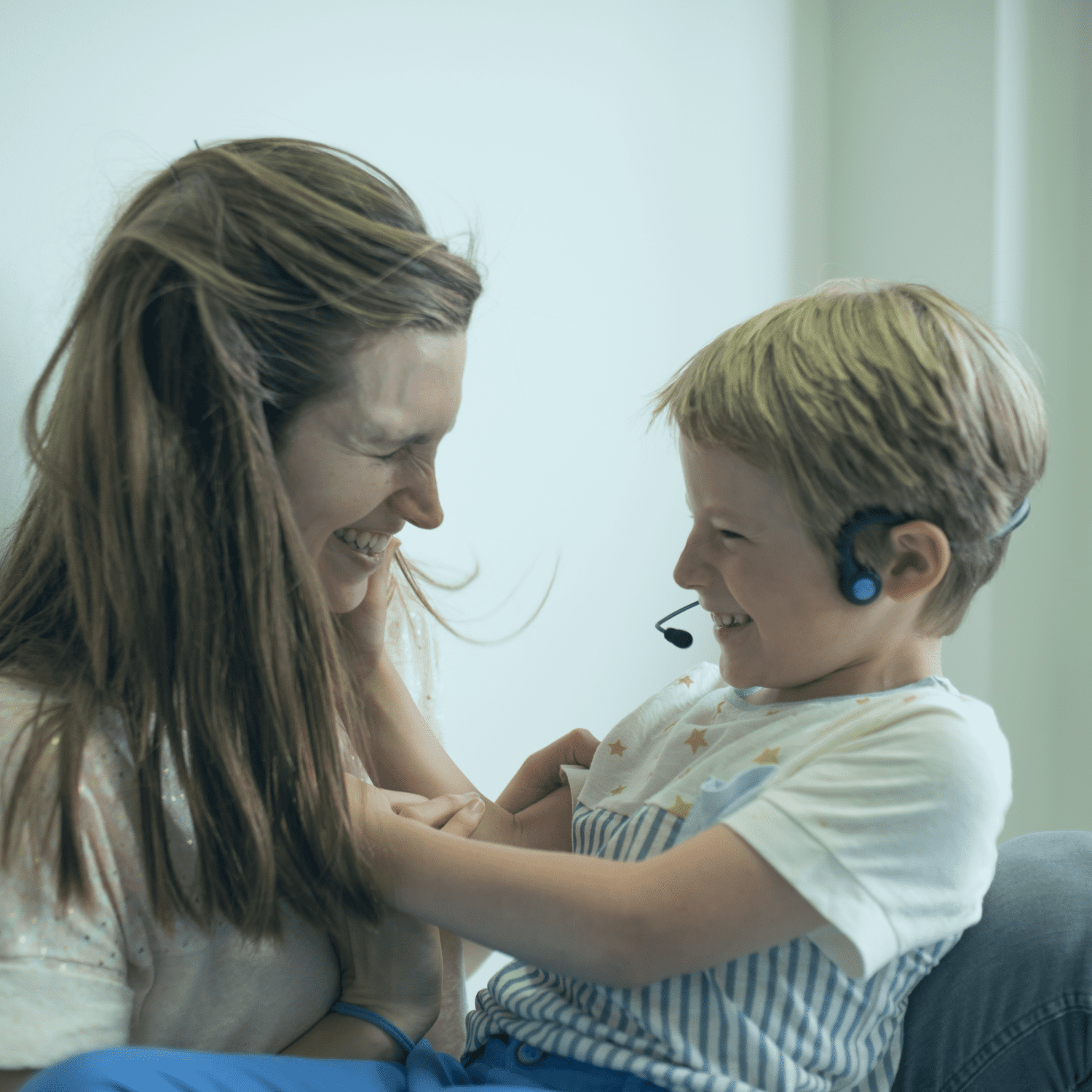ADHD Treatment Options: Guide to Managing Symptoms Effectively
 Amanda Unrau
Amanda Unrau CCC-SLP
September 10, 2024

Attention-Deficit/Hyperactivity Disorder (ADHD) is a brain disorder that impacts attention, behavior, and attentiveness. ADHD can significantly impact the daily lives of those living with it, but there are ways to combat its effects.
While ADHD cannot be cured, there are effective strategies and support systems that can help individuals manage its effects. This article will explore some of these practices and offer guidance on how to better cope with ADHD.
It’s important to consult with a healthcare professional before starting any new therapies or treatments. They can provide personalized advice and ensure that any approach you choose is appropriate for your specific situation.
Behavioral Therapy
Behavioral therapy for ADHD seeks to change negative behaviors by replacing them with positive behaviors. Individuals are taught skills to improve areas of difficulty, such as attention, organization, and punctuality.
While behavioral therapy doesn’t change the underlying cause of ADHD or make changes to the brain, it is an ADHD treatment that helps individuals manage their symptoms by learning strategies that help them in their daily lives. Children with ADHD can learn to manage challenging tasks, such as finishing homework on time, keeping their desk or bedroom organized, listening in class, and completing chores and daily routines.
Behavioral therapy for children includes a whole family approach. The behavior of the child, how it impacts their family members, and how the family members respond to the behavior are all considered. A behavioral therapist can help the family see if the child’s parents are unintentionally reinforcing negative behaviors. The therapist and family create a plan consisting of goals to change behaviors by reinforcing positive behaviors and effectively addressing negative behaviors.
Behavioral therapy can be used on its own or implemented in combination with other therapies or medications.
Medicational Therapy
Another attention deficit hyperactivity disorder treatment is medication. Medication should be prescribed by professionals. The most common types of medication prescribed for ADD treatment include stimulants and non-stimulants.
- Stimulants, or Central Nervous System (CNS) Stimulants, are the most commonly prescribed medication for the treatment of ADD. Stimulants increase the brain chemicals dopamine and norepinephrine. This leads to a calming effect in individuals taking stimulants, reducing hyperactivity and improving focus.
- Non-stimulants are often prescribed as medication therapy for ADHD when stimulants are ineffective or cause unmanageable side effects. Some non-stimulants also increase norepinephrine levels in the brain, which improves attention, concentration, and memory.
Consult with a medical professional to determine if medication as a form of attention deficit disorder therapy is an option for you. Finding the correct medication is not easy. It takes time, using a process of trial and error in order to find the medication that works best. You need to let your doctor know of any side effects or issues with the medication so that they can make changes as needed.
Cognitive Behavioral Therapy (CBT)
Cognitive Behavioral Therapy is a type of behavioral therapy that helps individuals with ADHD manage their ADHD symptoms that are impacting their daily life. The goal of CBT is to identify negative behaviors and thinking patterns and replace them with new positive feelings about yourself and your ADHD. For example, you can learn to shift a thought from “If this isn’t perfect, it’s no good,” to “I did my best and I can be proud of that.”
Cognitive Behavioral Therapy can address stress management, adaptive thinking, planning and organization, time management and procrastination, emotional regulation, and focus and attention.
Assistive Technology
Assistive Technology (AT) are tools that help individuals with ADHD compensate for or improve in areas of difficulty. Assistive technology allows individuals with ADHD to more fully participate in their daily lives, at times by bypassing aspects of tasks that impede task completion. For example, if you have difficulty completing an entire task from start to finish in one sitting, using a timer to break up tasks into shorter segments over a period of hours or days can help you see a task to completion in a more manageable way.
Assistive technology devices can be low-tech or high-tech. Examples of low-tech assistive technology include pencil grips for handwriting, a paper planner or calendar, or a kitchen timer. Examples of high-tech assistive technology include apps on a phone or iPad, electronic calendars, or text-to-speech software.
Another type of Assistive Technology is Forbrain. Forbrain is an auditory stimulation headset that is another option when considering ADHD and treatment. Forbrain utilizes bone conduction technology to tap into the auditory feedback loop. Forbrain provides auditory feedback in order to help individuals with ADHD stay grounded and on task. Forbrain can improve focus and attention, which helps those with ADHD complete daily tasks or participate in treatment or therapy sessions.
Psychotherapy
Another option for ADHD treatment is psychotherapy or psychoeducation. The goal of psychotherapy is to help individuals with ADHD understand ADHD, how it works, and why it causes certain behaviors. Individuals also learn to separate truth from what is false. For example, someone with ADHD who does not understand it may feel that they are lazy or unintelligent.
In psychotherapy, individuals have the opportunity to open up about their feelings regarding their ADHD and its symptoms. Individuals also learn what behaviors they exhibit and how to replace negative behaviors with healthier, more productive behaviors.
Psychotherapy is driven by the patient and focused on symptoms. Measurable goals are set, and coping skills are learned in order to manage symptoms. Goals may include reducing stress or anxiety, managing housework or schoolwork, or improving relationships with peers, teachers, or coworkers.
Social Skills Training
The goal of Social skills training is to learn and practice appropriate social skills in order to improve social interactions with others. Social skills training is often conducted, at least partially, in a group setting. This allows individuals with ADHD to learn and practice social skills with others. The group is given many opportunities to practice newly learned skills in a small safe setting. This helps individuals build skills and confidence before generalizing these skills into daily interactions.
Narrative Therapy
Many people with ADHD tend to have negative self-talk, as they may tell themselves that they are lazy, unmotivated, and unintelligent. This becomes a vicious cycle as they feel there is no point in trying and then give up.
With narrative therapy, individuals with ADHD learn to externalize their difficulties so that they view ADHD and its symptoms as the problem, instead of seeing themselves as the problem. Individuals learn to identify and replace negative thoughts and beliefs about themselves with positive ones. Individuals focus on their strengths and talents instead of their weaknesses. This often leads to improvement in performance because they can see themselves as able to solve their own problems.
Support Groups
Something that can be overlooked when considering ADHD and treatment is providing opportunities for individuals with ADHD to connect with others who understand. It is reassuring for people to know that they are not alone in their experiences.
Support groups meet regularly so that members get to know each other and share personal stories and experiences. Support groups can be beneficial for both individuals with ADHD and their loved ones. A medical professional can help you find local support groups.
Coaching/Skills Training
ADHD coaching may be available for specific skills that individuals with ADHD want to address. ADHD coaches specialize in a variety of areas, so you can find one that can best meet your needs. These coaches help individuals with ADHD manage their symptoms by setting up systems and routines. Specifically, they can help you identify the ways in which ADHD impacts your life, help identify solutions and tools that match your weaknesses and learning style, and help you identify your strengths and talents and how to use them. With ADHD coaching, coaches and individuals with ADHD work together to set goals, solve problems, discuss wins and difficulties, and set up and complete homework.
Parent Training
If you have a child with ADHD, parent training can help you better understand your child’s ADHD and how best to help them. With parenting skills training, parents learn tools and strategies to help their children succeed. Examples of strategies parents may learn and employ in this type of ADHD treatment include: togetherness, timeouts, rewards, stress management, and setting up for success.
- Togetherness: Parents set up weekly times to participate in an activity that their child enjoys. During this time, parents compliment their child and point out their strengths.
- Timeouts: Parents employ timeouts when children become overstimulated or out of control. This teaches children how to react and pause the next time they are in a similar situation.
- Rewards: Many children benefit from a point system, sticker chart, or some type of reward system for good behavior or task completion.
- Stress management: Parents learn to teach their children stress management techniques such as deep breathing, meditation, exercise, or other relaxation techniques.
- Setting up for success: Parents structure situations and settings in a way that ensures their child will be successful. This helps build confidence as they move to more and more challenging scenarios.
How to Choose the Right ADHD Treatment?
When deciding on which ADHD treatment to use, it is essential to collaborate with a doctor or a related professional. A professional can help you consider all relevant factors in order to find the right fit.
It is also important to consider the way that ADHD presents itself. How does ADHD impact your daily life? How does it limit you in your work setting, school, or social interactions? What tasks do you struggle to complete? Identify the major difficulties that ADHD causes in your life.
Consider what are the top priorities of things you would like to improve. Review what each therapy or treatment targets, and find which is the best fit for you. Many people with ADHD will implement more than one treatment approach. You may need to try more than one ADHD treatment before you find which ones help you the most.
Final Words
While there is no cure for ADHD, you do not have to settle for a life of disorganization and lack of focus. The good news is that there are ways to limit the impact that ADHD has on your life. Review and consider the many ADHD treatment approaches that have been presented in this article. You will likely benefit from a combination of treatments or therapies. Remember to consult with your doctor before implementing any ADHD treatment.
References
Blanchfield, Theodora. (2023, December 13). Types of Therapy for ADHD. https://www.verywellmind.com/types-of-therapy-for-adhd-5272434
Healthline. (2023, March 8). ADHD Treatment Options: Therapy, Medication, and More. Healthline. https://www.healthline.com/health/adhd/treatment-overview#1
Iftikhar, Noreen. (2021, May 21). Treating ADHD: What are My Options? Psych Central. https://psychcentral.com/adhd/treatment-for-attention-deficit-hyperactivity-disorder-adhd
Learning Disabilities Explained. (Accessed 2024, August 31). What is Assistive Technology for Learning Disabilities and ADHD. Learning Disabilities Explained. https://www.ldexplained.org/educational-strategies-lp/for-parents-of-children-with-adhd/what-is-assistive-technology-for-learning-disabilities/
Srakocic, S. (2021, April 16). Does Behavioral Therapy for ADHD Help? Healthline. https://www.healthline.com/health/adhd/behavioral-therapy-for-adhd#bottom-line




